As a kid growing up in Turkey, my parents hosted many parties with various diplomats and high ranking military people. My brother and I were the grill masters. We cooked hundreds of lamb, beef and chicken Kebobs—the common meat-on-a-stick that was ubiquitous throughout the streets of Izmir.

Humans have been cooking meat over open flames for as long as we have had fire. There is something special, and I think deeply embedded in our psychy, that makes it smell so good. Hopefully you can become your own pitmaster and taste the magic that is roasted meat. It is a mixture of art and science.
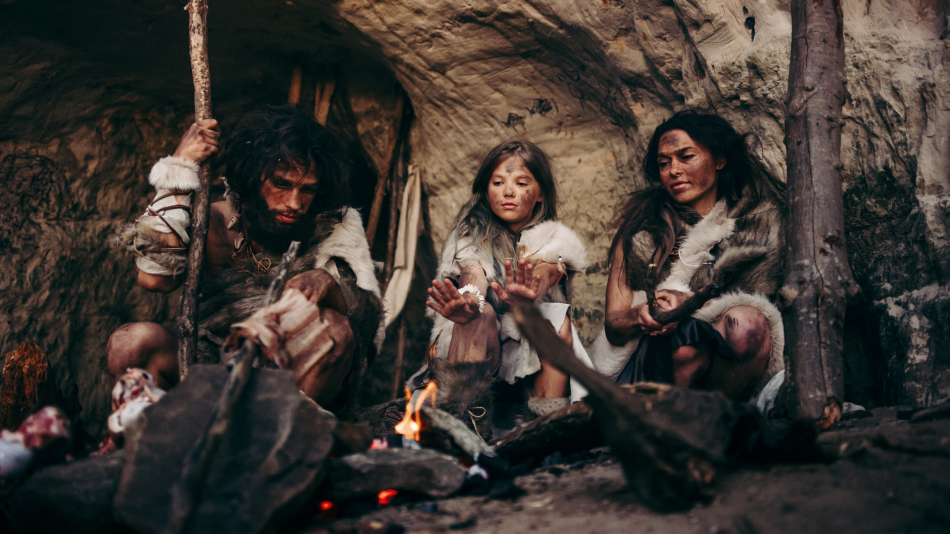
Learn the science of grilling meat and your success will greatly increase in providing delicious food for your loved ones and will take your art to a new level.
The Maillard Reaction
As meat cooks, the most magical transformation that occurs is the Maillard reaction. It is named for a French scientist who discovered the phenomenon in the early 1900s. The surface turns brown and crunchy and gets ambrosial in aroma. Who doesn’t love the crispy exterior of a slice of roast beef, the browned crust on freshly baked bread, or the crackling surface of a roasted marshmallow?
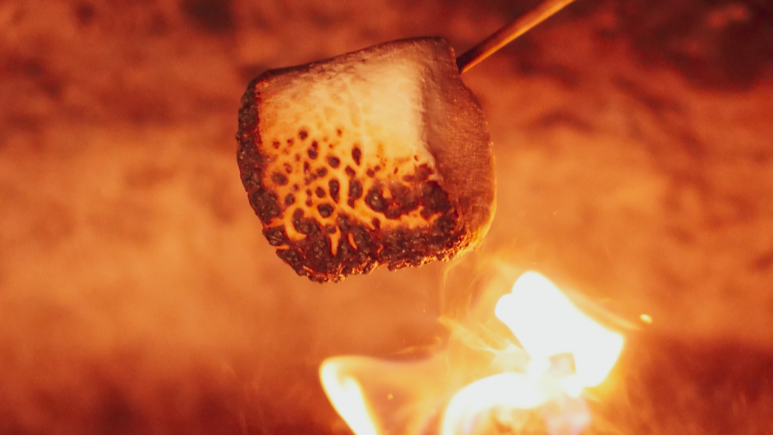
We don’t think twice about it, but that brown color on the surface is the mark of hundreds of compounds created when heat, especially heat above 300°F, starts changing the shape and chemical structure of the amino acids, carbohydrates, and sugars on the surface of the meat.
The Maillard reaction is why you always brown the meat before cooking. Almost all recipes tell you to do this before adding the meat to the cooking process. It is the magic.
Temperature, the Key Ingredient
The most important tool in your arsenal is a good thermometer.
Meat can go from succulent and delicious to overcooked in just a few minutes. On a hot grill with thin meat, 30 seconds can be the difference between great and oops. If you are cooking the same meat and same thickness over the same grill all the time, then you can time things and be pretty accurate. But when using different meats, thicknesses and grills, it is difficult to use time as your guide. A fast reading thermometer is the grill masters secret weapon. Almost all serious pitmasters use quick reading thermometers.
Here is a link to the Thermapen. I have been using one for over 10 years now and cannot imagine cooking without one. It is a little spendy but is one of those tools you will use all the time and it will last. I am a believer in having good quality tools for the things that matter. They read the temperature in a second or two while a normal temperature probe takes 7 to 10 seconds. It doesn’t sound like much, but it seems to take forever when you stand there for 10 seconds wondering if the temperature is going to keep rising. I know...a first world problem.
Having spent some time in East Africa, I think their solution is to just cook everything to very well done. Most the meat I have had there was very tough.
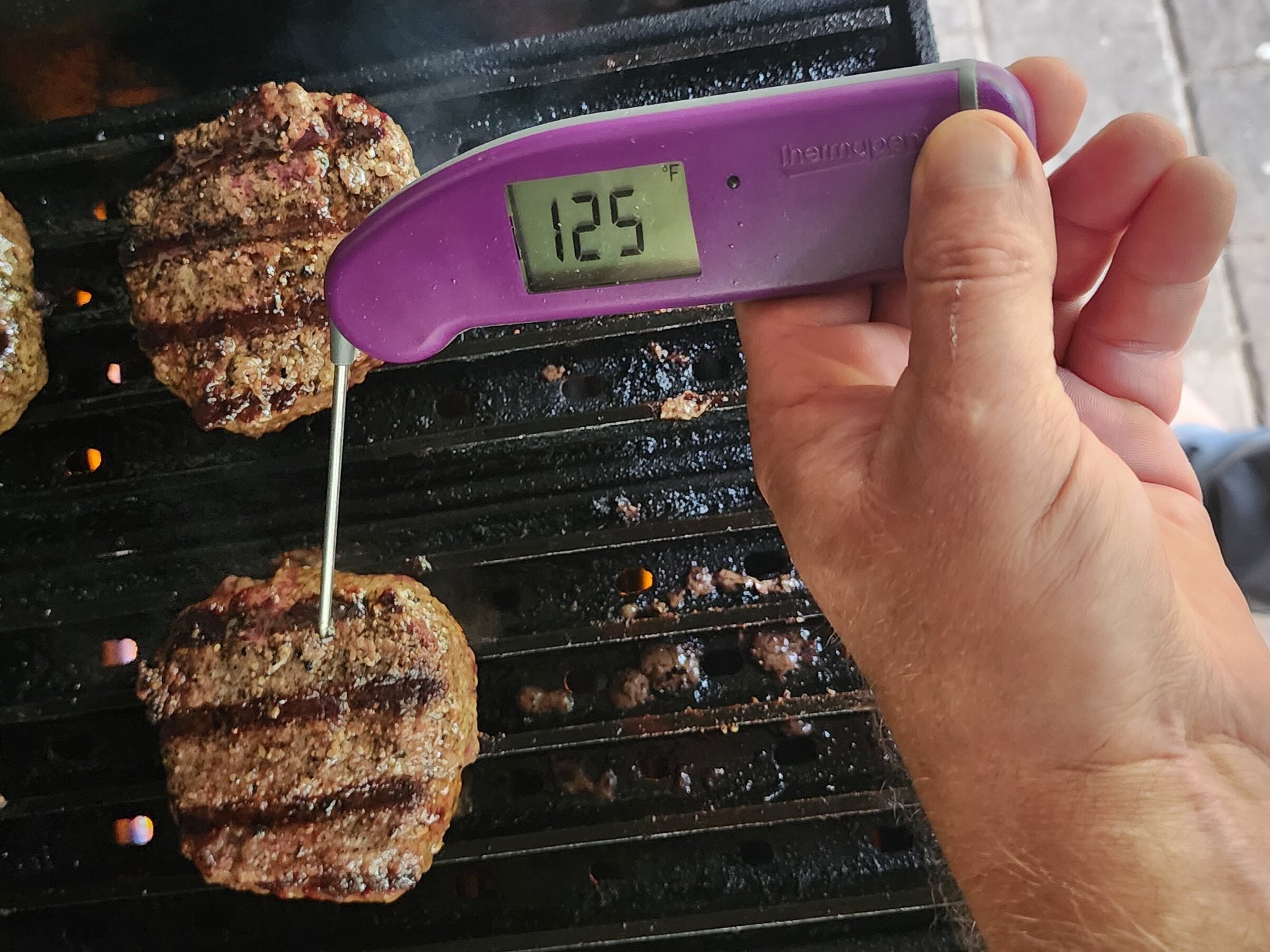
But please, don't put it in the dishwasher (you know who you are, IFYKYK). They are water resistant, not waterproof.
Different meats need different temperatures, both for safety and for texture and taste. Chicken, pork, and ground meats all need different temperatures. Beef is safer at lower temperatures and can be eaten like sushi when cared for properly, think Steak Tartare. In case you had not heard, pork now has a lower safe temperature than it used to. In 2011, the united states department of agriculture (USDA) lowered the recommended safe cooking temperature for pork from 160°F to 145°F. The new recommendation was based on a review of scientific evidence and was in line with what many chefs and cookbook authors had been saying for years.
Resting Meat – Myth and Fact
You might have heard that resting meat is essential after cooking. Some very fine chefs say you should and others say don’t. The only way to know is to understand what goes on when resting and either use it to your advantage or don’t do it to prevent what happens when you rest.
Professor Greg Blonder, a professor of Product Design and Engineering at Boston University, conducted many experiments and documented the results. He has a BS from MIT and a PHD from Harvard, but is a bit of a BBQ nut so we can benefit from his research. Thank you Greg.
When you rest meat, the temperature inside the meat continues to rise as the meat reaches equilibrium in something we call carry over. This can be from 5°F to as much as 15°F. Many people cover the meat with aluminum foil to hold the temperature and moisture in while it rests. If you are not aware of this, you can overcook your meat when you take it off the grill at the temperature you want it to end at. (NOTE-TO-SELF: take meat off the grill *before* it's done)
It is commonly believed that if you cut into meat right after cooking that the juices haven’t congealed in the meat and you will loose much of the juiciness of the meat. This is partially true but may not be as significant as you think.
Through much serious experimentation it was shown that the juices lost when from cutting the meat were 15% less after resting. In a steak cut right off the grill, 27 grams of juices ended up on the plate with 23 grams for the rested steak. So, a small difference, but not significant when you consider all the other complex reactions going on. Remember that the juices in the meat are actually rendered fat and not moisture. This is why fattier cuts are so highly prized, they are juicier.
Kenji López-Alt, who was the culinary director for Serious Eats and currently a culinary consultant, did some experiments on the resting theory and showed how you do indeed lose more liquid when you cut into the meat right away. His experiment involved cutting the steak in half before and after resting various times. This experiment clearly shows that more juices are lost when not resting.
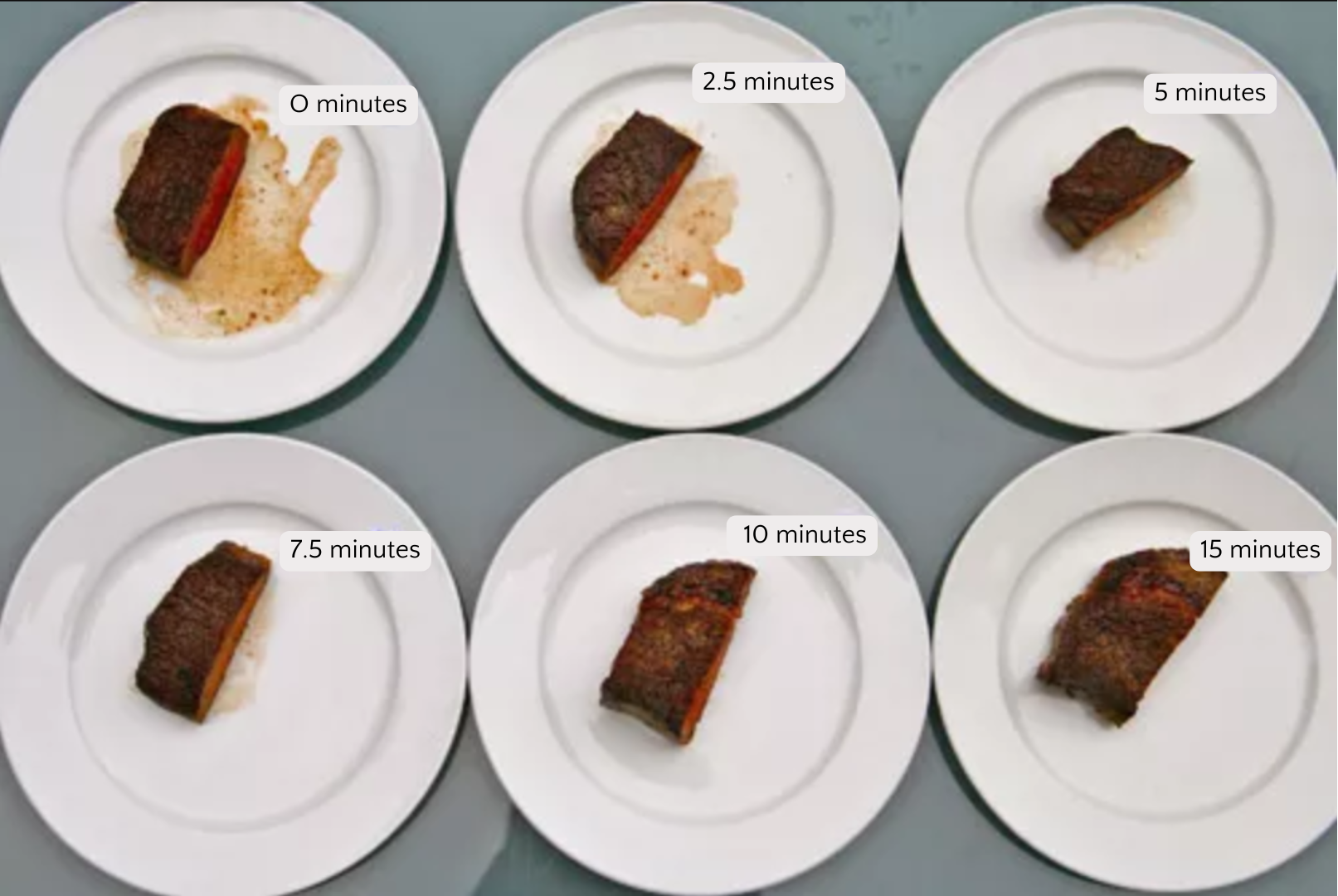
The argument against the need to rest is that these juices are easily mopped up as you eat the meat and no flavor or juiciness is lost. Another argument against resting is it takes time to get the meat served and people will typically take 10 to 15 minutes to eat the steak anyway so resting is simply not necessary.
For me, I like to rest it for 5 to ten minutes because I eat very fast. Of course, I have eaten many times right off the grill and I cannot say it lost anything as a result. Science aside, good quality meat cooked to the right temperature is just damn good no matter how you slice it.
So, the final word according to Meathead, the BBQ Whisperer, resting is a mistake for the following reasons:
- Cold meat – as the meat rests it cools and no one wants a cold steak or burger. (This can be mitigated with a warming drawer, one of my favorite appliances.)
- Overcooked meat – Due to carry over the inside of the meat will rise by 5 to 15°F which can result in overdone meat. (I mitigate this by taking the meat off the grill early to account for the carry over.)
- Waxy Fat – as the rendered fat cools it congeals and can get waxy. (This can be mitigated by the warming drawer also.)
- Soft surface – while resting the meat in contact with the plate, or covered, can become soft. The juiciness of the meat depends a lot on the crust and it’s saltiness. With the right crust, the fat and sinew can be absolutely delicious.
- Rubbery skin – chicken and turkey right off the grill has a crispy skin. The longer it rests, the more rubbery it becomes.
I recommend trying both ways and see which one you like better. Experimentation will make you a better informed cook, plus you can eat all the results.
What about covering the meat while resting?
Covering the meat while resting does marginally reduce the loss of heat, but it also keeps in steam and this softens the outside crust. If this is desired, then by all means cover. If you worked hard to get a crispy crust, like with chicken or turkey, or a good sear on a steak, then the cover will undue your hard work and soften it.
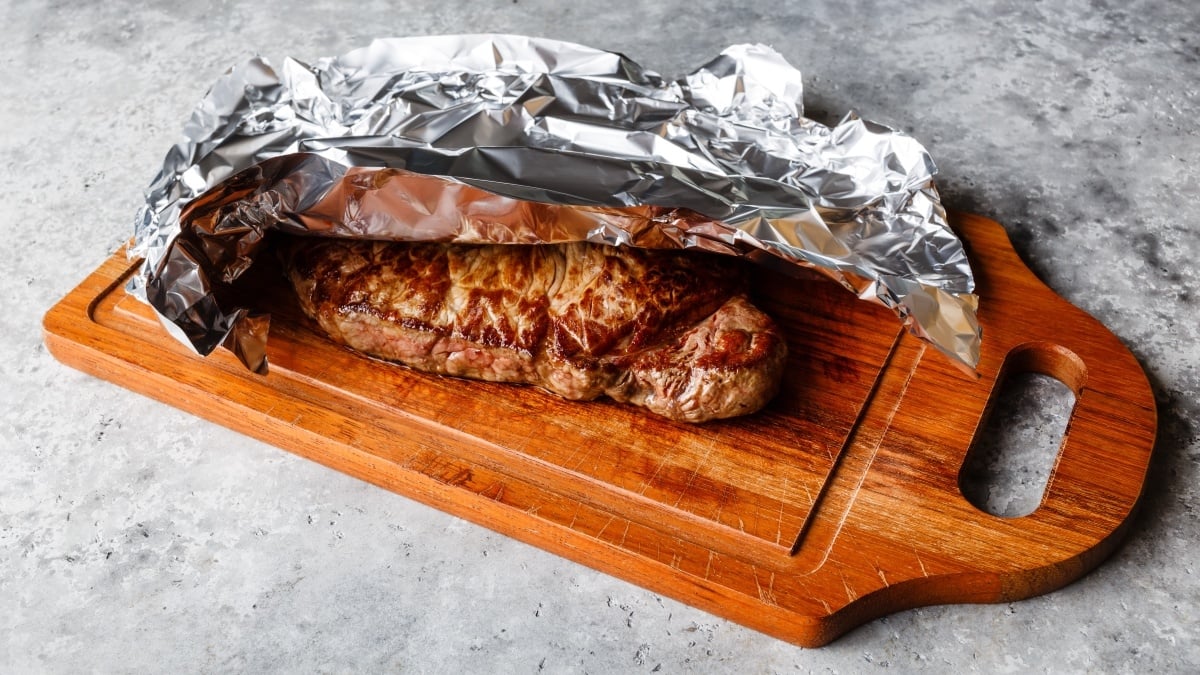
Putting the meat in a warming drawer of low enough temperature is a great way to keep things warm without too much concentration of steam. We never seem to eat right as the meat is done because we have to gather the stragglers for dinner. Restaurants use hot plates and heat lamps. I have built a few kitchens in the past and I consider a warming drawer an essential appliance. I use mine almost every day.
If you don't have a warming drawer, timing becomes more critical and you may want to warm plates in the oven or microwave before the meat is done to hold it's temperature.
Holding is different than resting
Resting is a term used for letting hot meat cool after cooking but is typically used for meats cooked to less than 165°F.
Holding is usually used for meats that are cooked up to the 200°F range like a brisket or ribs. Holding the meat at 170 to 180°F will help tenderize the meat and breakdown some of the connective tissue. A lot of moisture is lost during the long cooking time and holding helps bring some of the moisture back. It is a balancing act between maintaining the bark and the juiciness but that is a discussion for another time. Long slow cooking and smoking are unique from barbecuing steaks, burgers, and wings.
I was teaching a class in Texas one time and was eating at the bar. I met a competitive pitmaster and we started talking barbecue. He was a nice guy but would not share any details with me in case I them against him. Welcome to the world of competitive barbecue.
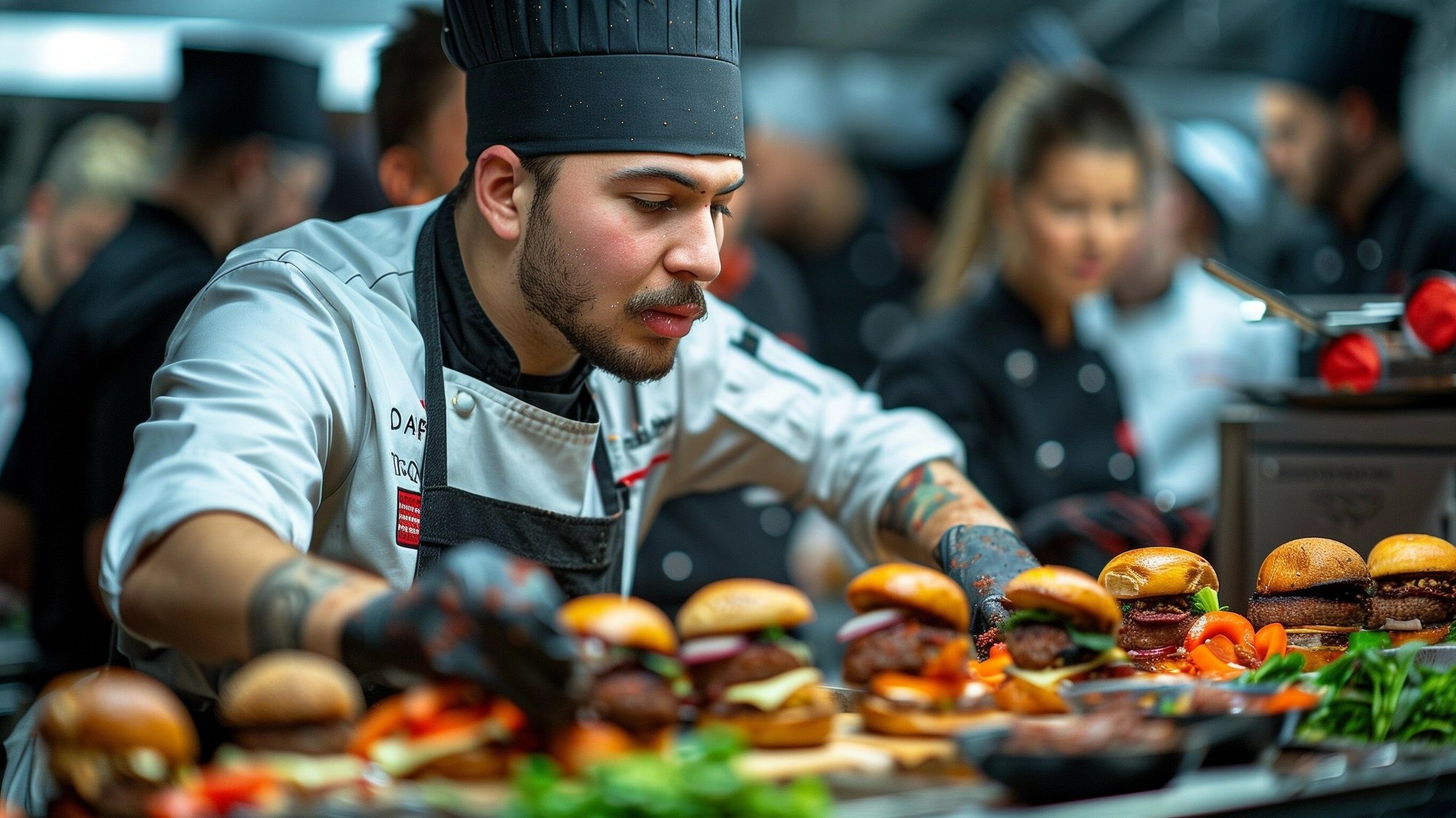
Barbeque is as old as mans ability to make fire
If you know anything about anthropology, you know that homo sapiens have been around for roughly 300,000 years. Analyzing their bones we know that we were carnivores up until the recent past, the last 10,000 years or so. Many anthropoligists believe that eating meat is what allowed our brains to develop as much as they did. Interestingly, comparing two branches of the Massai, one stayed mostly carnivorous, and one more plant based, the carnivorous branch had more musculature, was on average 6 inches taller, and had larger brains.
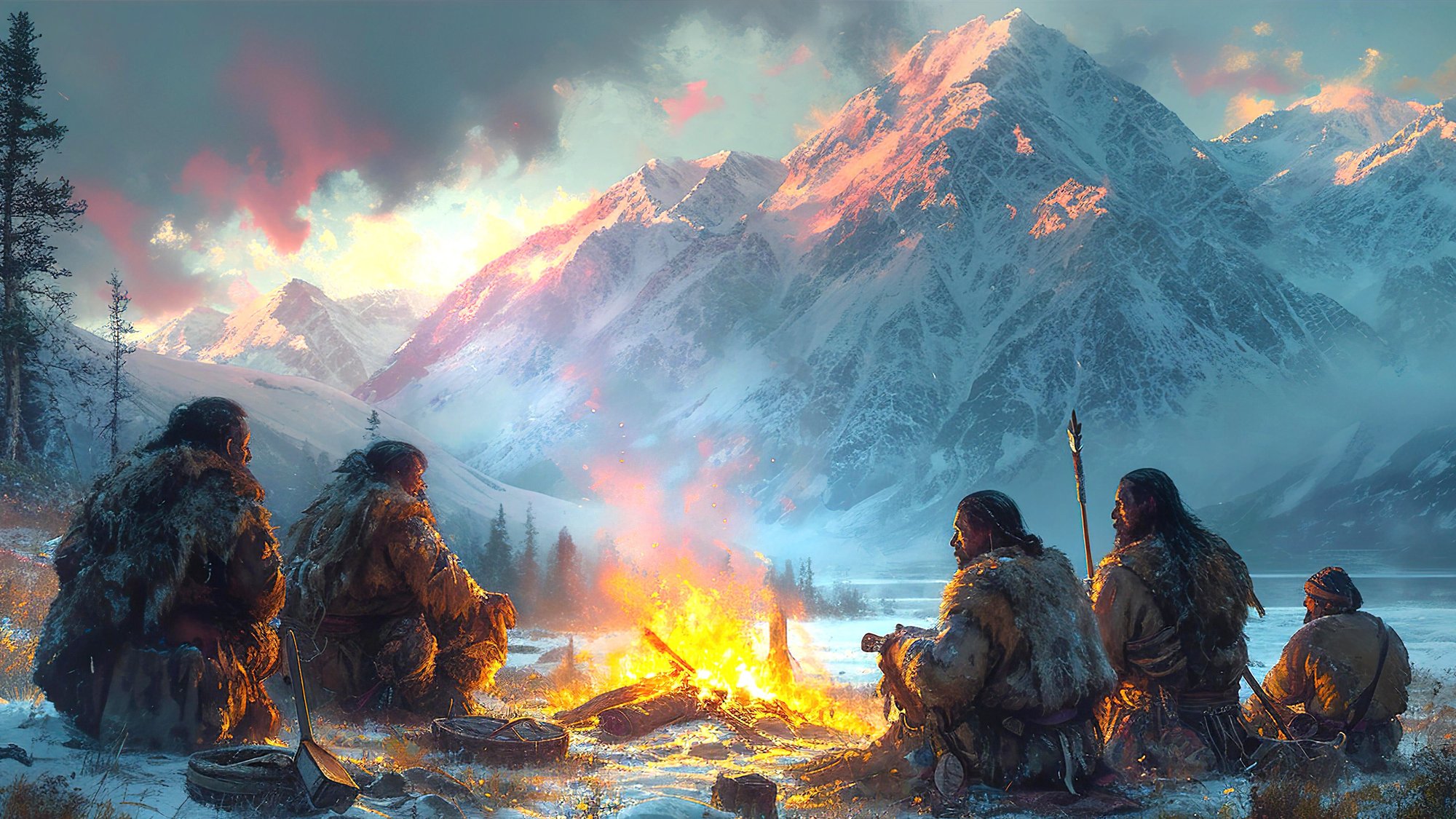
We have been told many negative things about meat lately and things are getting a little crazy around this topic. Many of the athletes in the Paris Olympics had to bring in their own food and chefs because they were trying to go plant based on much of the menu. As a country, we are eating less meat per capita than we were 100 years ago and we are fatter and sicker than we have ever been.
You may have heard of the blue zones as areas of longevity. Hong Kong has the highest meat consumption per capita and the longest average life span but this is left out of the discussion. I will discuss this more in a future blog. Hope you enjoyed this brief meat science teaser. There is always more to learn. Take care.
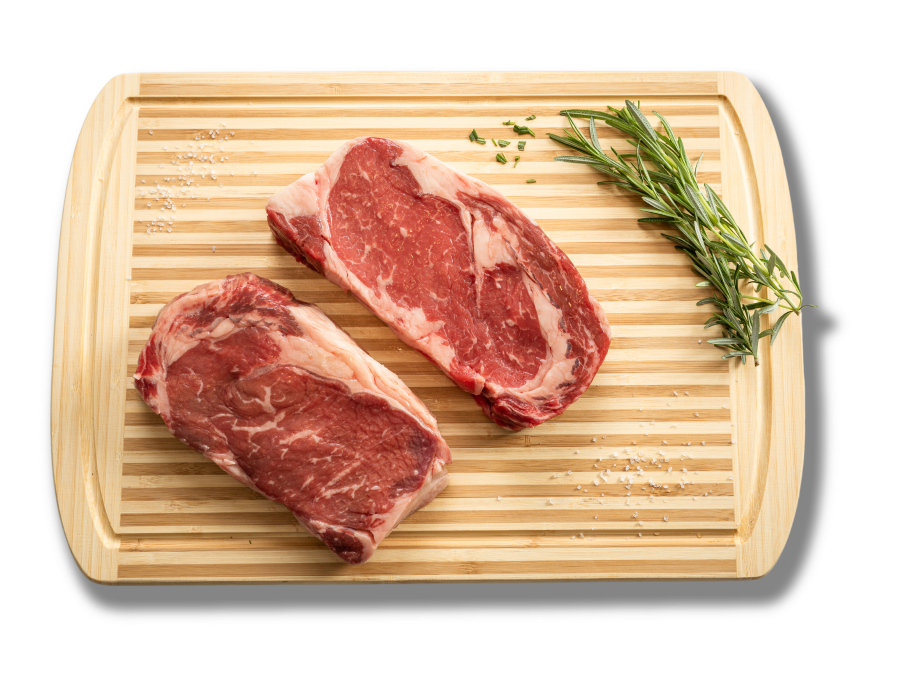
LOVE THIS ARTICLE?
NEED IT BACK-POCKETED FOR LATER?
CLICK BELOW TO PIN IT!
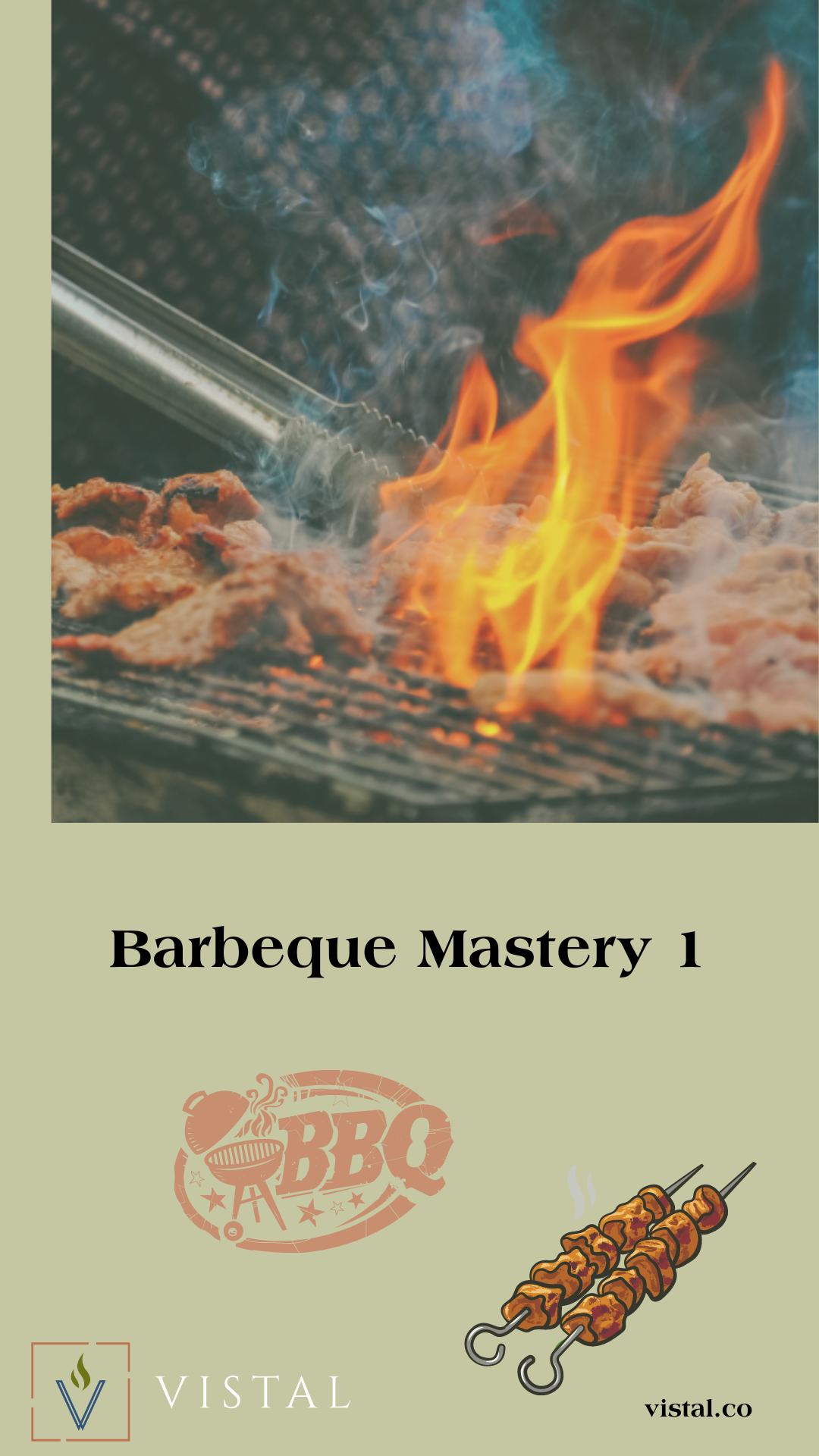


















Comments